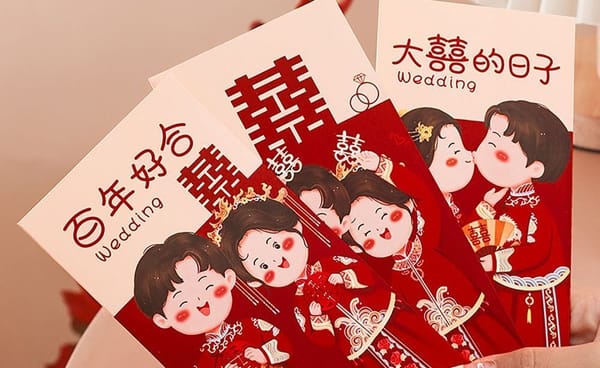Tea Ceremony 101: Your Ultimate Guide to the Chinese Tea Ceremony for Singapore Weddings

The tea ceremony is a cherished tradition in Chinese weddings, celebrated for its deep symbolic significance and emotional depth. It is a ritual that honors family and ancestral ties, showcasing the couple's respect and gratitude towards their elders.
If you're planning your wedding, integrating a tea ceremony is an essential component that you cannot forget to plan. Here’s your everything you need to know when organizing your tea ceremony.
Understanding the Cultural Significance of the Tea Ceremony
The tea ceremony is more than just drinking tea; it's a ritual where the newlyweds express their appreciation and deference to their parents, grandparents, and other family elders.
During the ceremony, the couple serves tea to their elders from both sides of the family, symbolizing their union and the merging of two families. In return, the elders impart their blessings and often present the couple with red packets (Ang Bao) or jewelry, which are considered tokens of good fortune and familial approval.
When Should You Host the Tea Ceremony?
This ceremony is flexible enough to fit into various parts of the wedding day, depending on the couple's schedule and preferences. You can choose to have it:
- Before the solemnisation
- Between solemnisation and reception
- During the reception
- After the wedding banquet
- On a separate day
We have wedding schedule templates available for both lunch banquets and dinner banquets that incorporate tea ceremony into the actual day programme.
Where to Host the Tea Ceremony?
Choosing the right venue for your tea ceremony is just as important as planning the event itself. Here are some common options:
- At Home
Hosting the tea ceremony at a family home is a sentimental and budget-friendly option. It creates a cozy atmosphere and allows for personalized setups. - At the Wedding Venue
Many couples choose to incorporate the tea ceremony into their wedding day schedule, holding it at the solemnization or reception venue. This option is convenient for guests and reduces logistical challenges. - At a Specially Rented Venue
For a more elaborate setup, consider renting a dedicated space like a hotel function room or heritage house. This is especially popular for couples who want a luxurious ambiance or expect a larger crowd.
Not sure where to start? Discover wedding venues perfect for tea ceremonies here.
What to Wear to the Tea Ceremony?
The couple often wears traditional Chinese attire such as Cheongsam (Qipao) or Changshan. Some opt for their wedding outfits, especially if the ceremony is held concurrently with the wedding banquet. If held on a separate day, you can wear more casually, ideally in red attire.

Packing List For the Tea Ceremony
- Tea Set: Invest in a special tea set, typically in porcelain or ceramic, that you can keep as a keepsake. The tea serving area is usually decorated simply yet elegantly, often with red for luck and prosperity, and sometimes with double happiness symbols.
- Tea: Lotus seeds and red dates tea is commonly served as it symbolizes sweetness and fertility in marriage. Accompany the tea with sweet treats like traditional Chinese pastries, which also carry meaningful symbolism for a sweet life.
- Tea Cups: Prepare some disposable tea cups - this is often a requirement from the venue if you're having the tea ceremony at your same solemnisation/reception venue. You can buy disposable cups that have wedding decor printed on them.
- Ang bao box: You'll need a box or bag to keep all the ang baos you receive from your elders.
BONUS TIP: Get a family or friend to help you with announcing the lineup and pouring the tea into tea cups.
How to Conduct the Ceremony Correctly
- Order of Serving:
Traditionally, the couple serves tea to the groom’s family first, starting with the grandparents, parents, then to uncles, aunts, and finally, elder siblings. The same order is followed for the bride’s family if the ceremony includes both sides together.
2. The Process:
- Prepare the tea: Ensure the tea is freshly made and at the right temperature.
- Serving the tea: The couple kneels (traditional) or bows (modern adaptation) as they offer tea, calling each family member by their formal title.
- Receiving gifts: After drinking the tea, family members will hand over their gifts or red packets.
3. Etiquette and Speeches:
It’s gracious for the couple to say a few words of thanks after serving the tea. Elders might also give short speeches or impart words of wisdom.
Looking for an experienced videographer to capture the wisdom shared during the ceremony? Discover highly-rated videographers on Bridely.
Bridely.sg is Singapore’s only wedding review site and the largest wedding venue and vendor directory. You can read reviews written by graduated couples and their guests!




